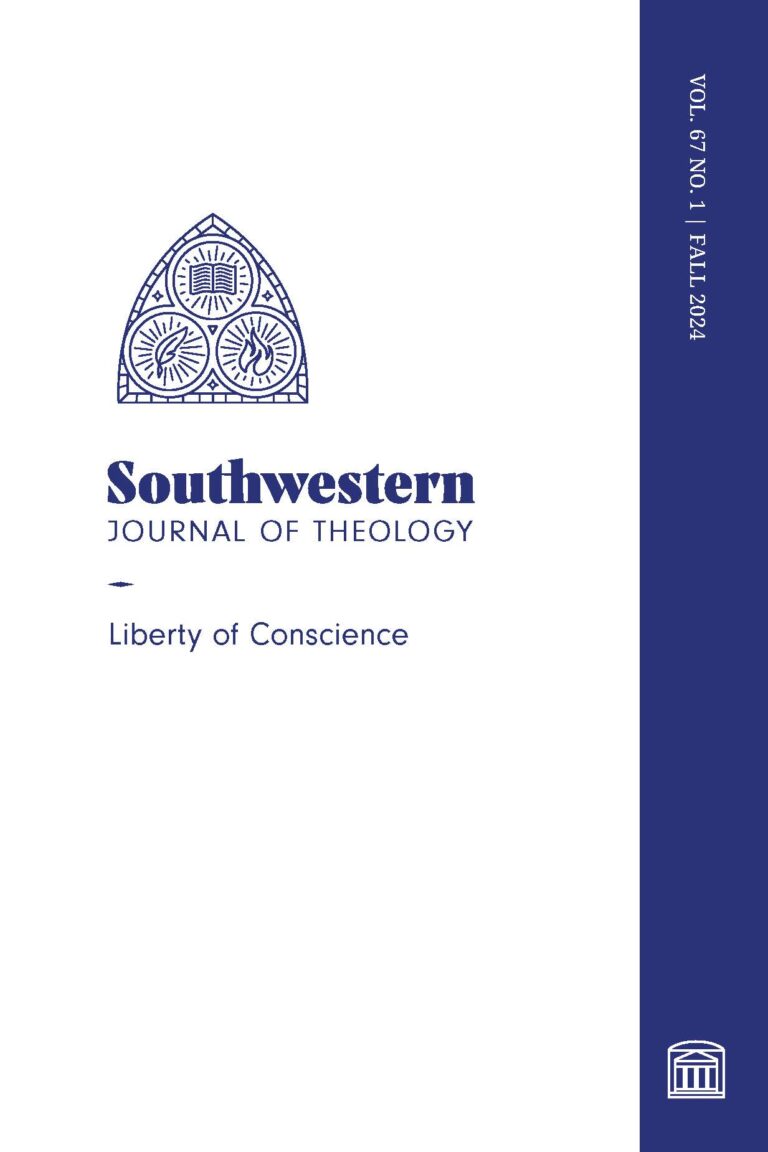
Liberty of Conscience
Southwestern Journal of Theology
Volume 67, No. 1 - Fall 2024
Editor: Malcolm B. Yarnell III
By O. S. Hawkins. Brentwood, TN: B&H Publishing, 2024. 241 pp., $27.99.
There arose a generation who did not know W. A. Criswell. Most of my current students have never heard of this once-famous, highly influential Southern Baptist pastor. He is special to me because I was saved, licensed, and ordained under his ministry at First Baptist Church of Dallas. So, I welcome this biography of Criswell by O. S. Hawkins, chancellor and senior professor of pastoral ministry and evangelism at Southwestern Baptist Theological Seminary.
Hawkins had a unique relationship with Criswell, being his chosen successor (xiii, 64, 172, 224) and enjoying a friendship and mentorship that spanned decades (xii). Criswell was pastor at First Baptist Dallas for 50 years (1944-94, the last 4 years overlapping with Gregory and Hawkins), followed by Joel Gregory (1990-92) and O. S. Hawkins (1993-1997). Hawkins served as President/CEO of Guidestone Financial Resources from 1997 until his retirement in 2022.
This book is a sequel to Hawkin’s book In the Name of God: The Colliding Lives, Legends, and Legacies of J. Frank Norris and George W. Truett, recalling the influence both prominent pastors had on Criswell. Hawkins gleaned much information from the Oral History Project at Baylor University about Criswell’s admiration of Norris’s passion and pathos in preaching (2, 4, 36). Most of this enjoyable book is a decade-by-decade, 1940s-90s, description of Criswell’s accomplishments along with many interesting stories of this larger-than-life pastor. Hawkins does well in setting the tone of each decade by mentioning prominent people and events in the United States (29, 74-75, 128-31).
Four emphases throughout the book can engage, enlighten, and inspire the reader, as a good Christian biography should do. First, Criswell’s fiery expository preaching was based on his love of the Bible and his zeal for sharing the gospel. His favorite verse was Isaiah 40:8 (230). Second, the providential hand of God was evident throughout Criswell’s life. He never dated a girl until late at seminary, when he met and married Betty Harris, his long-time helpmate (57-59). Each pastorate came about through a series of unusual events, including Betty telegraphing FBC Dallas that W. A. would preach there one Sunday after he explicitly told her that he would not do so (34, 80). His vivid dreams (visions?) of being told by Truett to be his successor and then years later being told that Hawkins should be Criswell’s successor are certainly intriguing (64, 84-85, 223). Third, Anna Criswell’s strong guidance of W. A. through college shows the positive influence of a godly mother who sacrificed for her sons (19-33). She influenced him to be open to God using women in ministry, and he strongly supported women on staff at FBC Dallas (106-10, 113). Fourth, Hawkins mentions some of Criswell’s idiosyncrasies and regrets, devoting chapter 13 to the latter, showing that Criswell was a sinner saved by God’s grace.
Here are some additional positive features. The chapter on Criswell’s support of Jewish people and modern Israel and how this fits with his dispensational premillennial eschatology was especially insightful (189-204). Hawkins makes good use of humor throughout the book (17, 178, 201, 228), such as a quotation from the “Wheelbarrow Sermon” (147). Some anecdotes are especially moving and make great sermon illustrations, such as when pastor John Hicks on his deathbed lamented having an insignificant ministry, but he evidently forgot about a revival service he preached long ago in Texline when young Criswell got saved and told Hicks, “I’m going to be a preacher” (22-23). As a student at Baylor University, Criswell went after classes each day to preach in an impoverished area along the Brazos River called Sand Town (38). Criswell’s spontaneous song one day on the lawn of Mullins Hall at Southern Seminary touched the heart of student Paul Crandall. He was going to quit seminary but reconsidered after hearing Criswell sing “It Pays to Serve Jesus” (56).
Hawkins is an excellent preacher and an engaging writer, as was Criswell. While noting some Criswellian tendencies to exaggeration or overstatement (170, fn. 20), Hawkins occasionally enjoys the same practice, as many pastors do (70, 80, 113, 165, 218). Some stories in the book are repeated, such as the selling of the Criswell antiques, including a set of China owned by Adolf Hitler (69, 103-04, 221), and stating that contrary to Criswell’s claim of innovating the age-graded Sunday School, it was Norris who did so twenty years earlier (89, 112-13). An index and the addition of photographs, especially from Criswell’s early years, would have been a welcome addition to this volume, yet the publisher precluded them. However, none of these minor shortcomings detract from this engaging biography.
Since Criswell was a longtime pastor at an important church, there are many memorable stories about him. No doubt people who knew him have favorite anecdotes they wish were included in this volume, but its purpose was not to be comprehensive. This book is an enjoyable and insightful description of a highly influential evangelical pastor in the second half of the twentieth century, admiringly written by one of his successors. Students, pastors, and laypeople will benefit from reading this inspiring volume. Criswell might have put it like this, “Ah, lad, ten thousand times ten thousand thanksgivings for your profoundly reverential and magnificently benevolent biography, but beware what you say about Betty.”





